
The New General Catalogue of Nebulae and Clusters of Stars is an astronomical catalogue of deep-sky objects compiled by John Louis Emil Dreyer in 1888. The NGC contains 7,840 objects, including galaxies, star clusters and emission nebulae. Dreyer published two supplements to the NGC in 1895 and 1908, known as the Index Catalogues, describing a further 5,386 astronomical objects. Thousands of these objects are best known by their NGC or IC numbers, which remain in widespread use.

NGC 188 is an open cluster in the constellation Cepheus. It was discovered by John Herschel in 1825. Unlike most open clusters that drift apart after a few million years because of the gravitational interaction of our Milky Way galaxy, NGC 188 lies far above the plane of the galaxy and is one of the most ancient of open clusters known, at approximately 6.8 billion years old.

NGC 246 is a planetary nebula in the constellation Cetus. It is the first known planetary nebula to have a hierarchical triple star system at its center. The nebula and the stars associated with it are listed in several catalogs, as summarized by the SIMBAD database. NGC 246 was discovered by William Herschel in 1785.
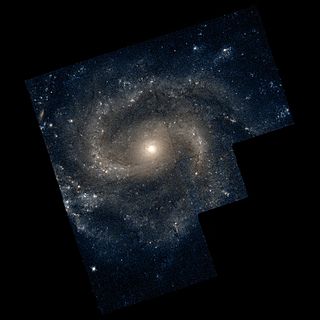
NGC 1042 is a spiral galaxy located in the constellation Cetus. The galaxy has an apparent magnitude of 14.0.

NGC 16 is a lenticular galaxy located in the Pegasus constellation. It was discovered on September 8, 1784, by William Herschel.

NGC 22 is a spiral galaxy located in the Pegasus constellation. It was discovered in 1883 by Édouard Stephan.

"Legacy Survey Sky Browser". www.legacysurvey.org. Retrieved 2023-05-19.

NGC 51 is a lenticular galaxy in the constellation Andromeda. It has a diameter of 90,000 light-years. The galaxy was discovered on September 7, 1885 by Lewis Swift, who described it as "Pretty faint, pretty small, round, brighter middle."
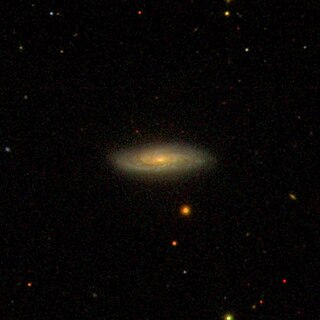
NGC 54 is an edge-on spiral galaxy in the constellation of Cetus. The galaxy was discovered by Wilhelm Tempel in 1886, and he defined it as "very faint, pretty small, round." The galaxy is 90,000 light years in diameter, making it slightly smaller than the Milky Way.

NGC 70 is a spiral galaxy located in the constellation Andromeda. It was discovered on October 7, 1855, by R. J. Mitchell and was also observed on December 19, 1897 by Guillaume Bigourdan from France who described it as "extremely faint, very small, round, between 2 faint stars".

NGC 72 is a barred spiral galaxy estimated to be about 320 million light-years away in the constellation of Andromeda. It was discovered by R. J. Mitchell in 1855 and its magnitude is 13.5.
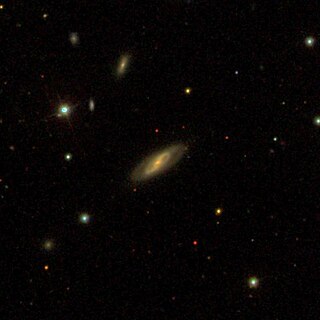
NGC 74 is a lenticular galaxy located in the Andromeda constellation. It was discovered on 7 October 1855 by Irish astronomer William Parsons.

NGC 359 is an elliptical galaxy located approximately 238 million light-years from the Solar System in the constellation Cetus. It was discovered on September 2, 1864, by Albert Marth. It was described by Dreyer as "extremely faint, very small."

NGC 523, also known as Arp 158, from the ARP catalog is a spiral galaxy located in the constellation Andromeda. It was discovered separately by William Herschel on 13 September 1784, and by Heinrich d'Arrest on 13 August 1862. d'Arrest's discovery was listed as NGC 523, while Herschel's was listed as NGC 537; the two are one and the same. John Dreyer noted in the New General Catalogue that NGC 523 is a double nebula.
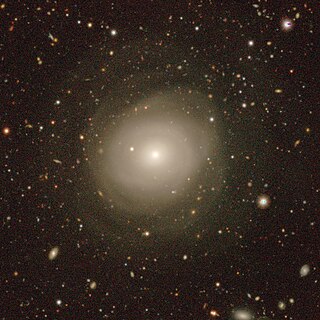
NGC 466 is a lenticular galaxy located about 227 million light-years away from Earth in the constellation Tucana. NGC 466 was discovered by astronomer John Herschel on October 3, 1836.

NGC 491 is a barred spiral galaxy located about 161 million light-years away from Earth, in the constellation Sculptor. NGC 491 was discovered by astronomer John Herschel on September 25, 1834.

NGC 480 is a spiral galaxy located about 546 million light-years away from Earth in the constellation Cetus. NGC 480 was discovered by American astronomer Francis Leavenworth In 1886.

NGC 4466 is an edge-on spiral galaxy located about 50 million light-years away in the constellation of Virgo. NGC 4466 was discovered by astronomer Bindon Stoney on February 26, 1851. The galaxy is a member of the Virgo Cluster.
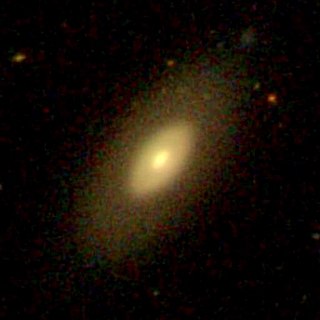
NGC 4919 is a lenticular galaxy located about 340 million light-years away in the constellation of Coma Berenices. NGC 4919 was discovered by astronomer Heinrich d'Arrest on May 5, 1864. NGC 4919 is a member of the Coma Cluster.

















